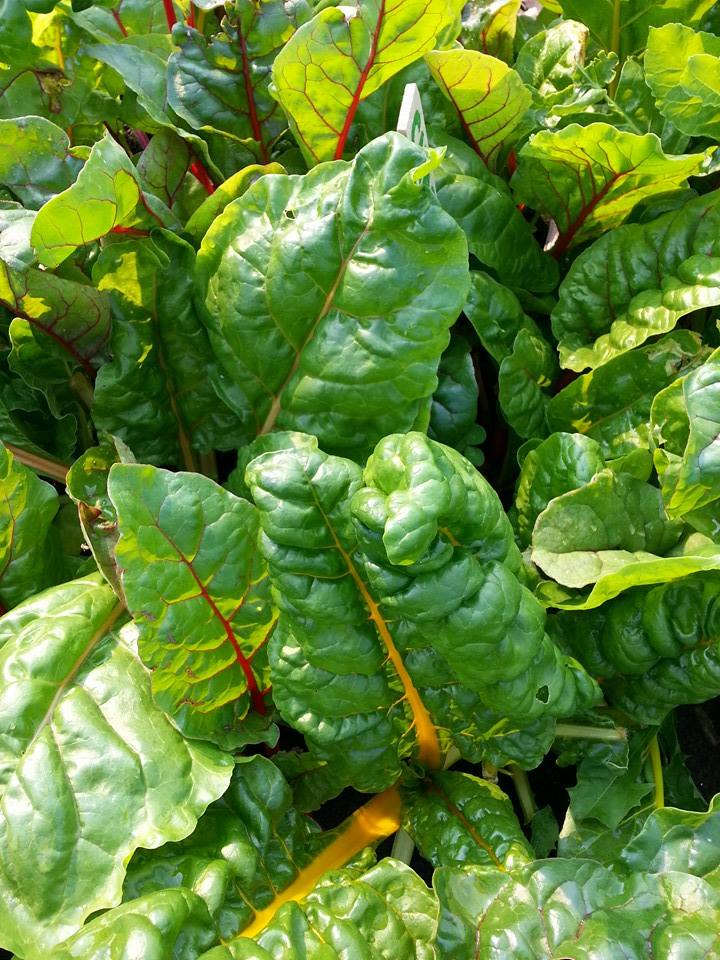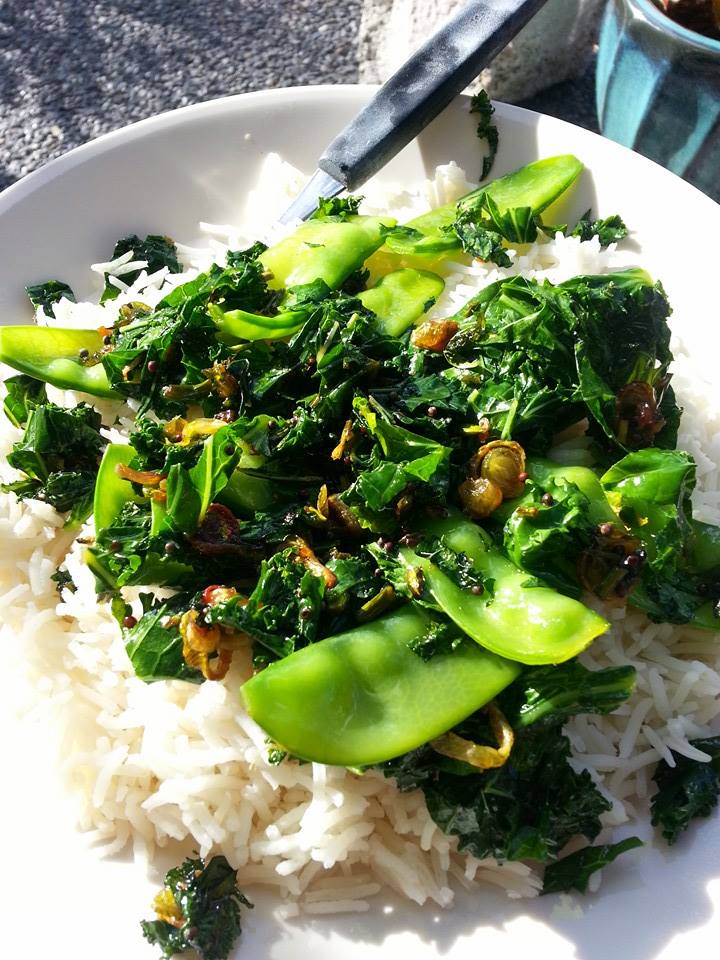Canmore Community Gardening Society
Growing Food! Building Community! Gardening Together!
Dark Green Leafy Vegetables!
Eat Your Dark green Leafys!
Leafy Greens: Kale, Swiss Chard, Spinach, Mustard Greens, Beet Tops, Turnip Tops, Kohlrabi Greens, Broccoli Rabe, Pea Shoots, Bok Choy(and many more) are delicious and jam-packed full of nutrition. They also all grow really really well in Canmore.
Baby-sized, you can pick the leaves to eat raw in a salad.
Pea shoots: When thinning your peas, keep the shoots. You want to pick off the tendrils, and break the stalks into 3” pieces with some leaves on each. If the stalks are really coarse you can remove the leaves and discard the stalks. If the shoots are very tender they can be added raw to a salad. Or you can stir-fry them. Wash them and then dry very well before stir-frying.
Spinach: Spinach should be cooked with the stalk left on. If you have the root of the plant you can peel and cook it as well in most dishes.
Kale: I remove the thicker stalks of Kale (as well as chard and beet tops) and save them for broth. Some dishes like casseroles and stews are really great for using the stalks.
Giant Red Mustard: No need to remove stalks unless you have really large coarse leaves. Has a strong spicy flavour and can be used sparingly to add kick to a dish, or cooked up on its own.
Chard, Beet tops, Turnip Tops: According to Guns Germs and Steel these are descended from the same plant and were bred for different features. That explains why they look the same above ground. In the Communal Garden this year, if you see a row or patch of all white stalks, those are turnips, all red or all yellow, those are beets, and a bazillion different colours mixed together will be the Swiss chard. I remove the thicker stalks of these as with kale, and these can be used interchangeably with kale, spinach and mustard in many recipes.
Freezing your greens for later: You need to blanche or steam your greens before freezing so they hold their texture and colour. I prefer to steam most of them. Remove stalks as needed, chop coarsely, and place in saucepan with steamer insert with a couple inches of water in the bottom. Cover with lid, bring water to a boil. At this point it is probably done. You want the greens to be just barely wilted and turned a brighter colour. Remove immediately and plunge into ice water to stop the cooking process. Remove from the water and wrap with a towel or paper towels, squeezing as much water out as you can (if you are going to use this for stews it’s not such a big deal but if you want to use for frittatas you want as little extra water in there as possible). Put in ziplock baggie, label and date, and put in deep freeze immediately.
For frittata instructions, see this blog https://canmorecommunitygardening.org/kale-frittata/
Basic method for cooking greens: Wash, de-stalk and chop your greens, leave water clinging to leaves. In a large frying pan with a lid, heat a generous amount of olive oil over medium heat. Sautee a chopped onion (or garlic, or shallots or leeks…) until soft and just starting to turn brown. Stir in a bit of salt and pepper. Add your greens and stir well to coat leaves with oil. Turn heat down and cover for a minute or so, checking often. It is ready when the greens are just barely wilted. Serve immediately. This timing works well for the tender greens we are growing in the communal garden. If you have tougher greens the cooking time will change, you may even need to add some liquid (broth or water). Experiment with adding different flavours; try adding mustard seed, hot pepper, cumin, ginger, sesame seeds, sundried tomatoes, raisins, cashews, peas, beans, chickpeas…
Basic Kale Chips: Line cookie sheets with parchment paper and preheat your oven to 300. Wash, dry well, de-stalk and tear kale into 2-3” pieces into a big bowl. Pour a little bit of olive oil on your palms and begin to massage oil into the leaves to coat thoroughly with a very fine layer. If you need more oil add it a drop at a time. You can always add more but if you add too much it’s just gross. Lay the oiled leaves out in a single layer on the cookie sheets being careful to minimize overlap. Sprinkle a sparing amount of salt to stick to the oiled leaves. Bake for about 10 minutes keeping a close eye on them. You want them to be completely dried without turning brown. My opinion is that kale has so much flavour on its own that it doesn’t need anything else, but if you want to try out some different flavours you can google kale chips recipes for ideas. My friends really like adding smoked paprika to their chips. The key thing to remember is that you only want to add enough oil to just barely coat the kale leaves. You can also try making chips with any thick-leaved veggie. Try broccoli leaf chips or cabbage or kohlrabi!
Stir Frys: Any of these can be added to a stir fry. Chopped stalks will go in around the same time celery would, and the leafy green part usually only needs about a minute, so at the very end.
Crudites: Chard stalks in particular are delicious raw and can be cut up and served on a veggie tray with dip or cheese. They have the same texture as celery but the flavour is very different. The bright colours look amazing.
Juice It: Leafy dark greens taste great juiced with beets, apples, carrots or lemon for sweetness and the mild flavours of celery and cucumber are also a good match in a glass of kale or chard juice.


